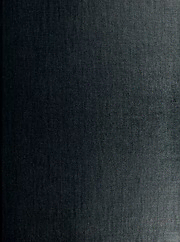
Constrained and unconstrained localization for automated inspection of marine propellers. PDF
Preview Constrained and unconstrained localization for automated inspection of marine propellers.
CONSTRAINED AND UNCONSTRAINED LOCALIZATION FOR AUTOMATED INSPECTION OF MARINE PROPELLERS by RICHARD ALAN JINKERSON B. S. Electrical Engineering, University ofNew Mexico (1982) Submitted to the Department of OCEAN ENGINEERING in Partial Fulfillment ofthe Requirements for the Degrees of NAVAL ENGINEER and MASTER OF SCIENCE IN MECHANICAL ENGINEERING at the MASSACHUSETTS INSTITUTE OF TECHNOLOGY May 1991 © Copyright Richard Alan Jinkerson The author hereby grants to M.I.T. and to the U.S. Government permission to reproduce and to distribute copies ofthis thesis document in whole or in part. i A. Douglas Carmichael Chairman, Departmental Graduate Committee Department ofOcean Engineering T253754 77j)<}& 7~/> CONSTRAINED AND UNCONSTRAINED LOCALIZATION FOR AUTOMATED INSPECTION OF MARINE PROPELLERS by Richard Alan Jinkerson Submitted to the Department ofOcean Engineering on May 10, 1991 in partial fulfillment ofthe requirements for the degree ofNaval Engineer and Master ofScience in Mechanical Engineering Abstract This work addresses the problem of optimal positioning of a set of measured points with respect to an ideal design surface. Localization refers to the process of determining the rigid body translations and rotations which must be performed on the set of points to move those points into closest correspondence with the design surface. In unconstrained localization all points have equal effect on the determination of the rigid body transformation, while constrained localization allows a subset of the points to have stronger influence on the transformation. The measured points in the context of this work refer to physical points in space that are obtained by direct measurement of a manufactured marine propeller blade. The ideal design surface refers to a surface description of the propeller blade provided by the blade designer. Given that the measured blade is manufactured from the design surface description, it is the task of localization to determine an optimal positioning that will bring the measured points ofthe manufactured surface as close as possible to the design surface. If the manufactured blade is repositioned in space according to the prescription of the localization transformation, it will have the closest possible correspondence to the original design. Direct benefits to the manufacturer may result from less wasted material in initial castings and better ability to program postcasting work through optimal positioning of the workpiece. The constrained and unconstrained localization method is developed from a theoretical basis. Applications of the localization method are investigated with examples of propeller designs and inspection data obtained from blades that were manufactured from those designs. Experimental results demonstrate the capabilities of the method and its applicability to automated inspection. Thesis Supervisor: Nicholas M. Patrikalakis Title: Associate Professor ofOcean Engineering Thesis Reader: David C. Gossard Title: Professor ofMechanical Engineering Acknowledgements This thesis is dedicated to my wife Karen. Without her support and encouragement this work would never have been completed. I want to acknowledge the continued assistance provided to me by my thesis supervisor, Professor Nicholas Patrikalakis. He has been a wonderful mentor and friend, unsurpassed in the support of his students. I am very grateful for his expert guidance and patient assistance throughout this work. I want to thank Dr. Franz-Erich Wolter and Dr. Nikiforos Papadakis, who were helpful to me in establishing some of the mathematical elements of the thesis and in developing a problem solution strategy. Both men are highly skilled in theoretical and applied mathematics; their expertise was valuable. I want to also thank Mr. Stephen Abrams, who is an exceptionally competent and diligent software engineer. He was able to transform my rudimentary computer programs into powerful and robust software of professional quality. Further, I wish to acknowledge Mr. Michael Drooker, Mr. Seamus Tuohy and Mr. Bradley Moran for their great assistance to me in the Ocean Engineering Design Laboratory at MIT. I want to recognize Mr. Neal Holter of the Applied Research Laboratory at Pennsylvania State University, and Mr. Michael Koehler and Mr. Thomas York of Philadelphia Naval Shipyard. They provided the marine propeller designs and inspection data which were crucial to the experimental validation ofthe work presented in this thesis. Finally I want to thank my thesis reader, Professor David Gossard. It was his enthusiastic personal style which first stimulated my interest in computer-aided design and computational geometry. Funding for the Design Laboratory work in this area was obtained from the MTT Sea Grant College Program and the Naval Sea Systems Command of the U.S. Navy under contract numbers NA86AA-D-SG089 and NA16RG0093-01.
